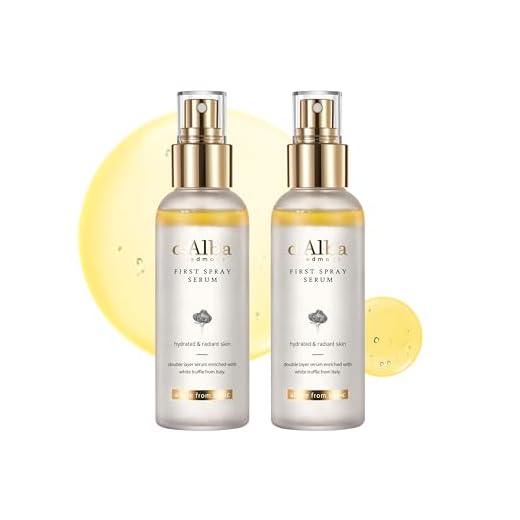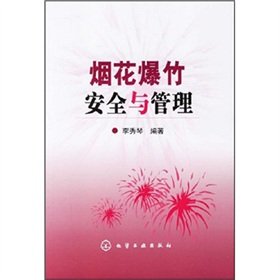


Recommendation: Limit each pressurized spray to 100 ml (3.4 fl oz) or less for items kept in your in-cabin bag; all such containers must fit inside a single clear, quart-sized resealable bag and be removed for screening.
TSA guidance: Personal care and medicinal sprays that meet the 100 ml/3.4 fl oz limit are permitted in hand baggage when placed in the liquids bag. Medically necessary inhalers and prescription aerosol medications are allowed in reasonable quantities beyond 100 ml if declared to security for separate screening–carry documentation or a prescription when possible. Flammable sprays (for example, spray paints or large-propellant aerosol solvents) are not allowed in the cabin.
Airline and IATA notes: Individual carriers apply IATA dangerous-goods rules or stricter limits. Many airlines restrict flammable or pressurized products to checked consignments only or ban them entirely. Check the carrier’s hazardous-goods page and the IATA/airline policy before departure to avoid seizure.
Packing tips: ensure caps and actuator protectors are firmly in place, place each container inside a sealed plastic bag to catch leaks, position sprays upright and cushioned inside your bag, and keep receipts or product labels available for inspection. If unsure about a specific product, contact the airline or security authority ahead of time and declare medical aerosols at the checkpoint.
Spray Containers in Cabin Hand Baggage: Rules, Limits, and Safe Handling
Do not stow pressurized spray containers in cabin hand baggage unless each container is ≤100 ml (3.4 oz) and all fit inside a single 1‑quart (≈1 L) clear resealable bag; one bag per passenger.
Permitted vs prohibited
Permitted: personal-care sprays (hairspray, deodorant, sunscreen) in ≤100 ml containers; prescription aerosol medications and inhalers – declare these items at security for separate screening. Prohibited on board: flammable aerosols (spray paint, butane, lighter refills), most self‑defense sprays, and any leaking or unlabeled pressurized containers.
Practical handling and airline checks
Keep actuators capped and valves locked; carry original labels and place the quart bag in an accessible pocket for X‑ray inspection. If an item exceeds size limits or leaks it will be removed. Checked baggage policies differ: many carriers allow non‑flammable sprays in hold baggage up to a combined net quantity of 2 kg (≈70 oz) per passenger – verify with your airline and the departure/arrival aviation authority before travel.
When uncertain, contact the carrier ahead of departure and declare medically necessary aerosols at the security checkpoint. For unrelated travel gear inspiration, see best string lights for patio umbrella.
Which aerosol products are allowed in the cabin: personal care, medical, and flammable categories
Personal-care sprays (deodorant, hairspray, dry shampoo, shaving foam) are permitted when each bottle is 3.4 oz / 100 mL or smaller and all liquid/gel/spray items fit inside a single quart-size clear plastic bag for screening.
Medically necessary pressurized products (metered-dose inhalers, EpiPens/auto-injectors, nebulizer solutions, prescription nasal sprays) are allowed in quantities exceeding 100 mL. Present them separately at security for inspection, keep original labeling or a prescription, and carry any required documentation; declare insulin pens and sharps if applicable and follow airline rules for needles and syringes.
Flammable consumer personal-care sprays with a flammable propellant (most hairsprays, some deodorants, certain dry shampoos) are acceptable only if they meet the 3.4 oz / 100 mL rule and fit in the quart bag. Highly flammable or hazardous sprays are forbidden in the cabin: examples include spray paint, butane/propane refills, fuel additives, industrial solvents, insecticide aerosols and many lubricant sprays (WD-40 type) that are classified as dangerous goods.
Before travel verify carrier and departure/arrival country restrictions. For safe screening, leave spray caps on, place items in a resealable plastic bag to contain leaks, carry medical sprays in easy-to-access separate pouches and keep prescriptions or manufacturer labelling handy for inspection.
What size, pressure, and quantity limits apply to aerosol products under TSA, IATA, and airline rules
For cabin carriage follow the 100 mL (3.4 fl oz) per-container limit inside a single quart-sized clear bag; flammable sprays are not permitted in the cabin and require special handling for checked baggage.
Numeric limits – TSA and IATA (core figures)
- Cabin (TSA liquids rule): individual container ≤100 mL (3.4 fl oz); container must fit inside a single quart-sized clear plastic bag per passenger.
- Checked baggage (IATA limited quantity provisions commonly adopted): individual pressurized spray container net quantity ≤0.5 kg (approximately 500 g / 17.6 oz) and total per passenger ≤2.0 kg (approximately 2,000 g / 70 oz).
- Pepper/defensive sprays: TSA allows these only in checked baggage when the capacity ≤118 mL (4 fl oz) and when the device has a safety feature that prevents accidental discharge; some carriers prohibit them entirely.
- Medical inhalers and certain prescription aerosol medications are exempt from the 100 mL cabin rule but should be declared at screening and carried with documentation where possible.
Pressure, packaging, and carrier variations
- Pressure: consumer pressurized sprays authorized under limited-quantity rules are assumed safe for air transport; do not puncture or alter valves, and keep protective caps in place to prevent accidental discharge during pressure changes.
- Labeling: checked items that meet IATA limited-quantity criteria are typically required to remain in their original retail packaging and show manufacturer markings (UN1950 for aerosols) when applicable.
- Flammable propellants (butane, propane, etc.): prohibited from the cabin and accepted into the hold only if they meet IATA/DOT dangerous-goods acceptance criteria and the carrier accepts them; many airlines refuse flammable sprays entirely.
- Airline rules vary: carriers may impose stricter size or quantity caps than TSA/IATA (for example, outright bans on certain spray types or lower per-item limits). Verify the specific carrier policy before travel to avoid confiscation at check-in or gate screening.
- Packing tips to meet rules: place sprays with caps in sealed bags, isolate from sharp objects, and do not exceed the per-container or per-passenger totals specified above; declare medical sprays at security checkpoints.
How to prepare and pack pressurized spray products in cabin baggage to prevent leaks, punctures, and pressure release
Place each pressurized spray product in a sealed, transparent 1‑liter resealable plastic bag and secure the actuator with its original cap plus two wraps of wide packing or electrical tape over the nozzle.
Use a rigid secondary container (hard‑shell toiletry case, small plastic box or metal tin) with 1–2 cm of foam or rolled clothing between the canister and the container walls to prevent impact punctures.
Keep items centered inside the cabin bag surrounded by soft garments; avoid external pockets, edges, or direct contact with zippers, keys, metal tools or electronic devices that could press or abrade the valve.
Check each unit for dents, corrosion, loose caps or sticky valves before travel; remove and responsibly dispose of any damaged item rather than risking transit failure.
Do not depress actuators during packing; verify the valve returns smoothly after a brief test spray and never remove safety caps or tamper with pressure-relief devices.
Maintain temperature limits printed on the product label (most warn against exposure above 50 °C / 122 °F); aircraft cabins are typically pressurized to the equivalent of 1,800–2,400 m (6,000–8,000 ft), so intact relief valves prevent overpressure but defective containers may vent.
For medical inhalers keep the original label or prescription, carry them in an easily accessible pocket for screening, and stow a spare unit separately; follow manufacturer instructions for any travel-warnings specific to the product.
If leakage or unintended discharge occurs, isolate the item inside an additional sealed plastic bag, remove affected clothing from the bag, notify crew or security staff if on-site, and keep receipts or photos for any insurance/claim needs.
When feasible, replace spray-format products with pump or solid alternatives for the trip to eliminate the risk of puncture or pressure release altogether.
Declare pressurized spray products at the checkpoint and present them separately for inspection.
Tell the TSA officer immediately if an item is a pressurized spray, medical inhaler, or flammable spray before it enters the X‑ray stream. Present prescription labels, doctor’s notes, or original packaging when available; that often avoids additional testing and speeds processing. Remove caps and place containers in the screening bin as directed – do not attempt to hide or conceal contents.
What security may do and why
Expect additional screening steps: manual inspection, swab for explosive residue, opening of non-sealed containers, and questions about contents and intended use. Ground crews will refuse items that are unlabeled, leaking, visibly damaged, or listed by the operator as prohibited (highly flammable propellants, oxidizers, or unknown chemicals). Items deemed a safety risk are seized immediately.
| Checkpoint action | Your response | Typical outcome |
|---|---|---|
| Officer asks to inspect a spray container | Hand it over, show documentation (prescription/label), state product type | Accepted and returned to you, or retained for further review |
| Swab test triggered | Answer questions calmly; allow the agent to complete testing | Cleared or item retained if test is positive/ambiguous |
| Container leaking, dented, or pressure-deformed | Do not attempt to patch; step back and follow agent instructions | Immediate confiscation for safety |
| Agent declares item prohibited | Request written reason and location where item will be taken | Item collected by checkpoint and typically destroyed or turned over to airport authorities |
Steps if an item is confiscated
1) Request a written receipt or an incident tag and note the agent’s name, checkpoint location, date and time. 2) Contact airport Lost & Found immediately – some items removed from screening are transferred there rather than destroyed. 3) If recovery fails, file a report with the Transportation Security Administration via tsa.gov/contact or by calling the TSA Contact Center at 1‑866‑289‑9673; include photos, receipts, and the incident tag number. 4) For items removed due to medical necessity, escalate with medical documentation and contact airline customer service; airlines sometimes assist with return or replacement if the confiscation was in error. 5) If the item is personal, consider shipping replacements via ground courier instead of risking another seizure – for purchasing or shipping tools and equipment, compare options such as best deals for lawn mowers.







